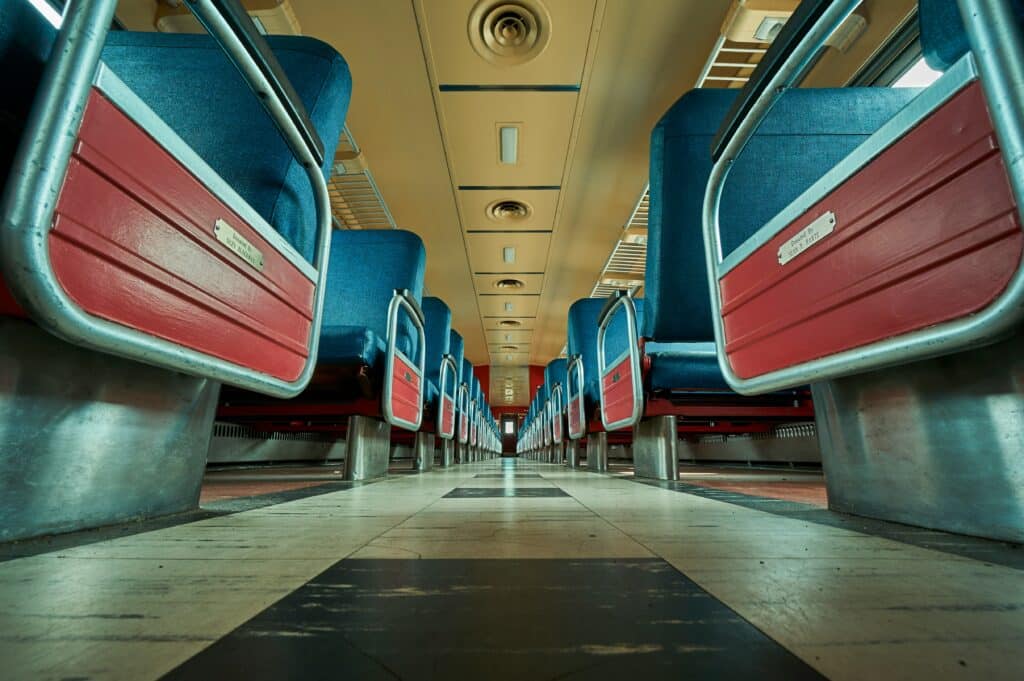Future-Proofing Europe’s Transport Infrastructure Through Digital-Ready Policy
This is the second installment of the Topic of the Month ' Exploring the Digitalisation of Transport Infrastructure: From Concept to Reality'
Europe’s transport networks face a multitude of critical challenges: from the need to increase the resilience of aging infrastructure in the face of climate change, to decarbonising transport systems whilst minimising disruptions to the EU economy, ensuring rail becomes a viable alternative to other modes, and upgrading dual-use infrastructure to facilitate military mobility amidst rising geopolitical uncertainty.
At a time when public funding for infrastructure is under pressure, digitalisation and data-driven solutions have the potential to address some of these challenges—making our infrastructure safer, more resilient and sustainable, whilst alleviating some of the significant resource bottlenecks that the EU faces.
Digital twins—dynamic, digital representations of physical infrastructure assets in their full context—are a key element in this equation. Backed by data, AI and machine learning, digital twins can improve the performance of transport infrastructure across its lifecycle—from planning, to design, construction, operations and maintenance.
Technologies such as these can help de-risk infrastructure project delivery by enabling better planning and management of the design and construction phases; ensure more efficient and coordinated deployment of cross-border infrastructure by providing a unified, up-to-date view of transport networks; and enhance the resilience of transport assets by enabling predictive maintenance and simulating climate change events. Ultimately, they help maximise the value of public funding channelled into Europe’s transport infrastructure, all whilst attracting private investments by demonstrating improved risk management.
Across the globe, technologies like digital twins are transforming the way transport infrastructure is managed throughout its lifecycle. At EU level, the flagship Rail Baltica project leveraged a digital twin to design the Northern Latvian section of the network and coordinate a project team distributed across six countries and multiple civil engineering disciplines.
In the UK, a digital twin was implemented to modernise 100 kilometres of the TransPennine railway between York and Manchester, improving information accessibility and reducing project time—resulting in £1 million in cost savings within six months of implementation.
Across projects such as these, data-driven solutions have provided a more efficient, collaborative, and cost-effective way of deploying and managing transport infrastructure. At scale, “going digital” in infrastructure will help accelerate the EU’s green and digital transition, strengthening the bloc’s competitiveness and reinforcing its security.
This is where forward-looking policy-making becomes essential: only through digital-ready policies can the EU fully harness the potential of digitalisation and drive the transformation of its transport networks—helping achieve its objectives for the 2024-2029 cycle:
Rewarding best practices and data-driven outcomes when allocating EU funds to transport infrastructure projects
EU funding is a powerful lever to accelerate the adoption of digital technologies for the design, construction, operation and maintenance of Europe’s transport infrastructure. To this end, in the 2028-2034 Multiannual Financial Framework, the Connecting Europe Facility for Transport should be revised in a way that rewards best practices in infrastructure project delivery—making “digital maturity” an integral part of project evaluation and selection.
This could for example involve setting specific criteria, reward mechanisms or beneficial conditions for proposals that demonstrate optimal use of digital tools like connected data environments and digital twins to improve planning, decision-making, and lifecycle management—leading to better, data-driven infrastructure outcomes.
Incentivising the adoption of digital tools and data deliverables through a modernisation of EU public procurement rules
The upcoming revision of the EU Public Procurement Directives is a once-in-a-decade opportunity to foster digitalisation and maximise the public utility, lifespan, and sustainability of both new and existing transport infrastructure. Today, the “cheapest bid wins” paradigm is still prevalent in tenders for capital-intensive projects, at the expense of broader non-price criteria (e.g. related to sustainability, resilience and innovation).
A forward-looking modernisation of public procurement rules can play an invaluable role in encouraging the uptake of digital technologies, leading to improved infrastructure outcomes. This could be achieved, inter alia, through:
- Incentives for the use of e.g. Building Information Modelling (BIM) tools, infrastructure digital twins, connected data environments, integrated lifecycle assessments, or the delivery of environmental data;
- Stronger valuation of qualitative/non-price criteria, particularly in relation to digitalisation (e.g. valuing environmental or resilience outcomes facilitated by digital technology, such as lifecycle assessments);
- A “total expenditure” (TOTEX) rather than “capital expenditure” (CAPEX) approach to cost estimation that takes into account the entire lifecycle of infrastructure assets—allowing for the consideration of broader criteria in procurement decisions, beyond upfront investment costs.
Accelerating the deployment of the TEN-T and the European high-speed rail network with digital technology
The recently revised TEN-T regulation—while acknowledging the critical role of technology to ensure the efficient roll-out of the network—provides little guidance on how digitalisation can concretely support its implementation. To bridge this gap, it is essential to promote best practices and knowledge sharing among Member States on how technologies like digital twins can accelerate the deployment of the TEN-T and the European high-speed rail network, as well as to support overall compliance with the regulation.
This is particularly important for high-speed rail infrastructure, which is typically characterised by large-scale, complex projects involving multiple stakeholders and high construction costs. It is equally relevant for the rapid deployment and upgrade of dual-use infrastructure to facilitate military mobility across the TEN-T.
In parallel, whilst the regulation sets new requirements on Member States for the maintenance of existing transport infrastructure, the EU should encourage adoption of AI-driven innovation and advanced asset analytics to improve the monitoring, operation, maintenance, and overall safety of Europe’s transport infrastructure—particularly given the worsening impacts of climate change. This is especially critical for bridges, many of which are decades old and increasingly vulnerable to structural risks.
To ensure Europe’s transport systems are fit for the future, digital readiness must be embedded across all policies and funding frameworks relevant to infrastructure. This is essential to unlock the full potential of digitalisation. It is not just about modernising infrastructure: only with smart, efficient, and integrated transport networks can the EU fully deliver on its ambitions for resilience, sustainability, security and global competitiveness.




